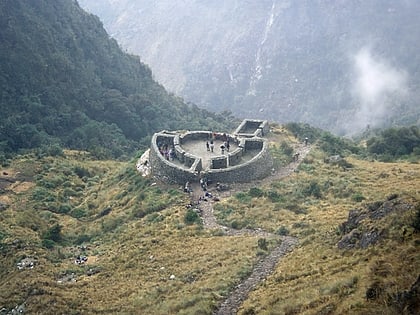Wiñay Wayna


Facts and practical information
Nestled amidst the lush greenery of the Peruvian Andes lies the captivating archaeological site of Wiñay Wayna, an integral part of the ancient Inca trail leading to Machu Picchu. This stunning historical gem, whose name translates to "Forever Young" in Quechua, is often overshadowed by its famous neighbor, yet it offers a fascinating glimpse into the Incan civilization.
Wiñay Wayna consists of an ingenious complex of agricultural terraces, buildings, and waterworks. Built into a steep hillside, it overlooks the Urubamba River, and it is believed to have served as a religious center as well as a rest stop for weary travelers on their pilgrimage to Machu Picchu. The site is characterized by its impressive agricultural terraces, which are constructed in a series of overlapping circles and are a testament to the advanced agricultural practices of the Inca.
The central part of Wiñay Wayna is the urban sector, which includes a series of ritual baths that demonstrate the Inca's sophisticated understanding of hydraulics. These stone baths are fed by a complex channel system that still functions to this day, providing a serene soundtrack of flowing water to the site.
Visitors to Wiñay Wayna will find it accessible via the Inca Trail, with the site offering a moment of quiet reflection and awe before reaching the grandeur of Machu Picchu. Despite its relatively small size, Wiñay Wayna is a crucial link in the understanding of Incan culture, showcasing their reverence for nature, mastery of agriculture, and spiritual devotion.
Cusco
Wiñay Wayna – popular in the area (distance from the attraction)
Nearby attractions include: Intihuatana, Huayna Picchu, Inti Punku, Putucusi.











